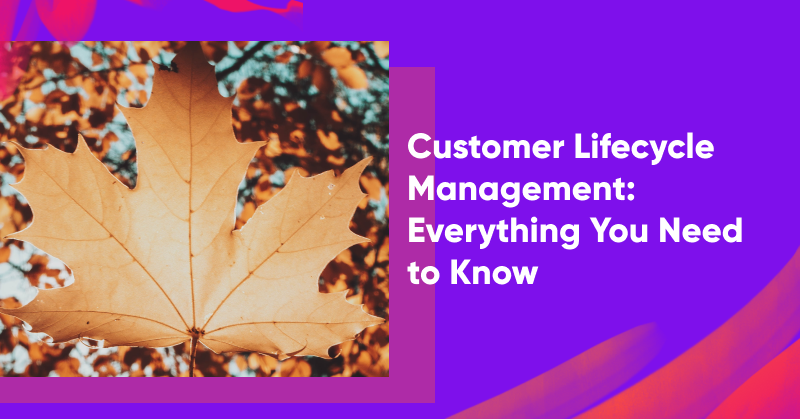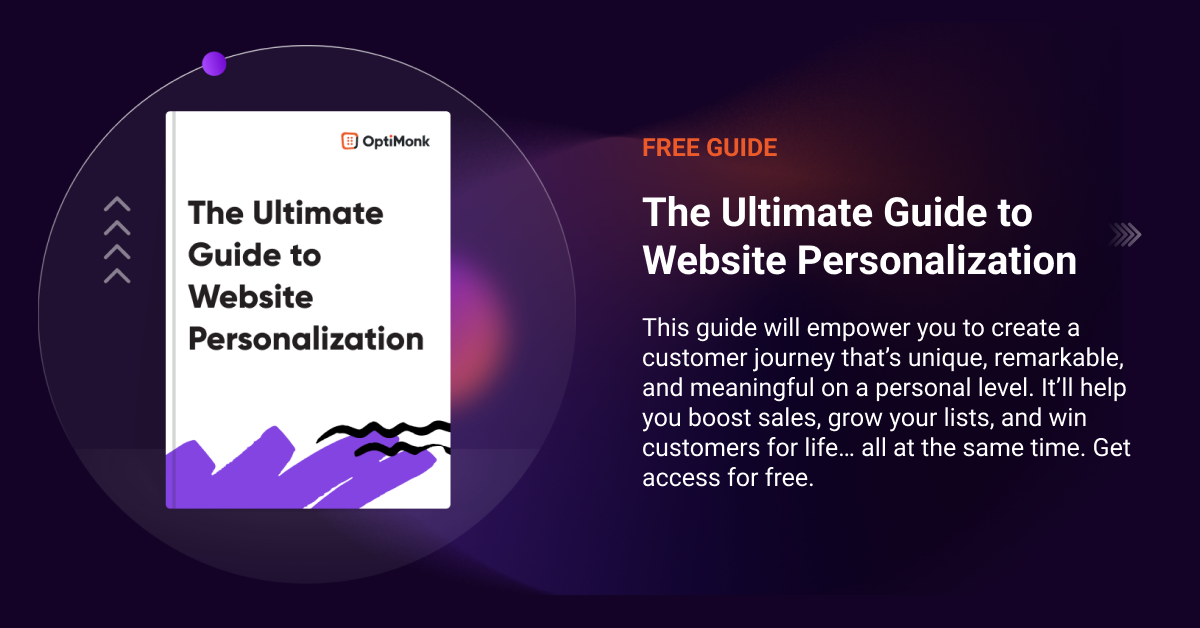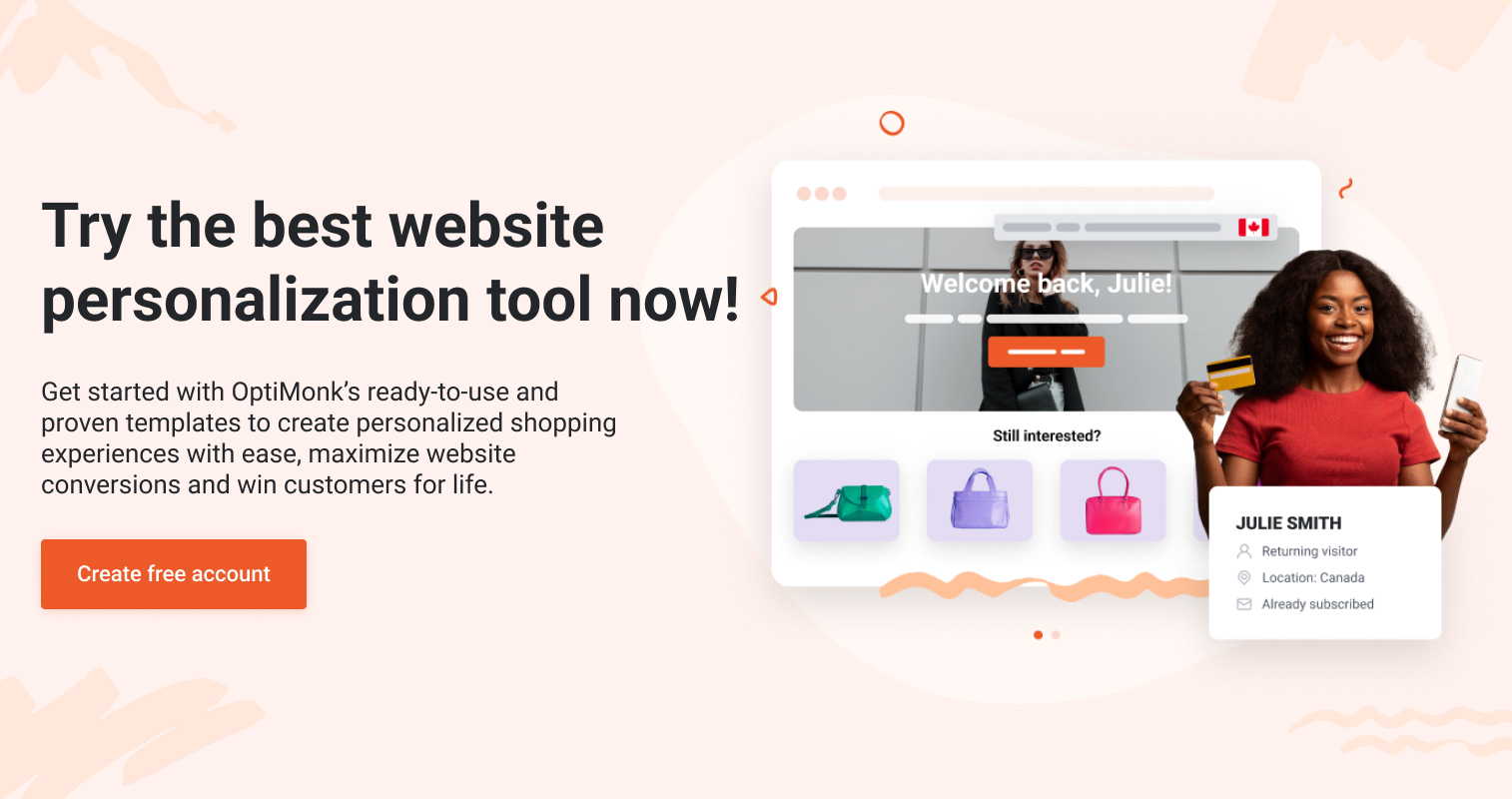The relationship between customers and a brand can last for years or even decades. Over this time, it changes and goes through several stages—this evolution is called the customer journey.
It’s crucial for ecommerce businesses to be able to follow their customers as they move through the customer journey and keep the customer relationship strong over time.
Customer lifecycle management is all about tracking and maintaining the way that both potential customers and existing customers interact with your brand.
The longer your customers stick around, the higher the customer lifetime value will be. Turning one-time shoppers into loyal buyers by understanding the customer lifecycle is a great way to generate strong, stable revenue.
In this guide, we’ll discuss what customer lifecycle management is, explore the five customer lifecycle stages, and explain how to get started using customer lifecycle management to grow your business.
Let’s begin!
What is customer lifecycle management?
Customer lifecycle management refers to the process of tailoring marketing strategies (and the overall customer experience) to the five different stages of the customer lifecycle (which we’ll discuss in a minute).
Knowing where a specific customer or segment of customers is on their customer journey helps your marketing, sales, and customer service teams perform to the best of their potential.
For example, your customer service team can increase customer retention if they know whether they’re speaking with a loyal customer or someone who just made their first purchase.
Similarly, customer lifecycle management gives you the ability to create targeted marketing strategies, because an understanding of the different stages customers go through (and which metrics to look for at each stage) means you can better meet their needs with each and every message.
There are many other ways you can use insights from customer lifecycle analysis to improve both your sales and your customer satisfaction. Before we get into those, let’s take a look at the 5 customer lifecycle stages.
The five customer lifecycle stages
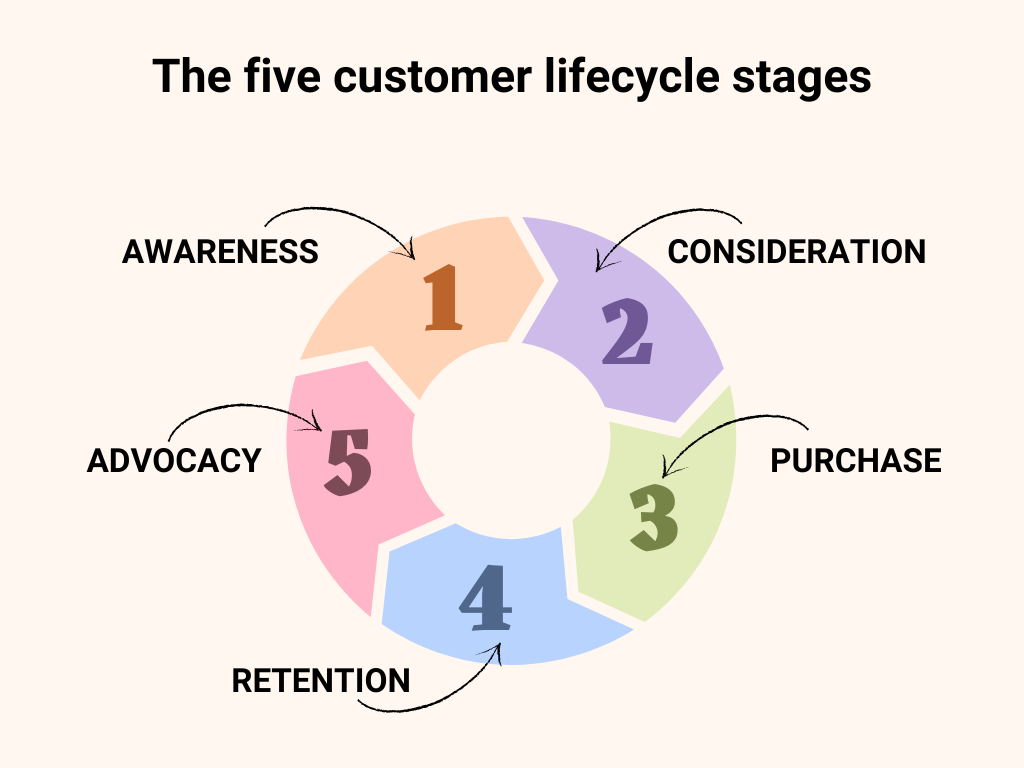
Having a good customer lifecycle management process means treating the different types of customers visiting your store (i.e. potential customers, new customers, repeat customers, etc.) according to the correct customer lifecycle stage.
Here they are, starting with the first stage.
1. Awareness
At this stage, a customer becomes aware of a problem in their life that they want to solve. This problem could be anything, really, from a health issue to simply needing a new bathing suit.
Most people start looking for a solution to their problem soon after they realize they have one.
They can do this passively, by keeping an eye out for an ad or a news story that’s relevant. Or they may actively search for a solution using an engine like Google or by speaking to their friends about the problem.
Each of these ways of looking for a solution presents an opportunity for a potential customer to learn about your brand. Perhaps they’ll come across one of your ads, or one of your existing customers might recommend your brand.
Your goal here is to get your name out there as a potential solution to people’s problems.
2. Consideration
This customer lifecycle stage occurs when a customer starts to seriously consider making a purchase. They’ve probably started comparing different products (looking at features, price points, and other factors) to decide which option is best for them.
However, it’s not always an easy decision!
That’s why the most helpful thing for customers at this stage to see is buying guides and other informational content. If you can clearly explain the main benefits and unique features of your products, you’ll give people a reason to end their consideration stage and start the purchasing process.
3. Purchase
This stage of the customer’s journey is pretty self-explanatory. It’s when a customer decides to make a purchase.
From a customer experience perspective, it’s crucially important to make sure the purchasing process and online ordering system are easy to navigate and user friendly.
This step needs to be frictionless, because you don’t want a customer to make it all the way here and then exit your sales funnel because they’re having issues making a purchase.
4. Retention
The retention stage is about building lasting relationships with your customers.
Your goal shouldn’t just be to make a one-off sale. Instead, you want to extend the customer lifecycle so that your customers make many purchases.
After all, customer acquisition is a significant expense—once you actually acquire a customer you want to maximize the revenue they bring to your store!
When you’re trying to cultivate a lifelong customer, you want to make sure their customer experience is as rewarding as possible. This means you should provide personalized service so people feel valued and invite customer reviews so people know you’re paying attention to their opinions.
Email is a great communication channel for sending thank you emails, while social media platforms are a great place to ask for feedback about your new products.
You’ll also want to send personalized offers or discounts to keep customers happy and coming back.
5. Advocacy
In the advocacy stage, your customers have a lot of brand loyalty. They’re used to purchasing your products or services on a regular basis.
In fact, most customers at this stage are so loyal to your brand that they actually become brand ambassadors. They might post on social media about their good experiences or recommend you to their friends and family.
Customer lifecycle marketing for each stage of the customer journey
As you can see, people at different stages of the customer lifecycle have very different needs.
And this is where customer lifecycle management comes into play: you need to cater to these needs in order to keep customers moving through your sales funnel towards making purchases and becoming advocates for your brand.
Here’s how to make that happen:
1. Help consumers find solutions to their problems
When customers are in the awareness stage, you need to get your name out there with great marketing material.
Your advertising should be helpful and deliver relevant content that helps them better understand their problem and exactly how your products can solve it.
This will make them trust your company so when they decide to further research (and, eventually, make a purchase) your company will be the first that comes to mind.
2. Help customers make a decision
In the consideration stage, you need to help customers narrow down their choices and make a final decision by providing as much information as possible.
This is a vital stage of the customer journey because potential customers are choosing between your brand and your competitors.
You can create comparison pages that highlight the unique benefits of your products, FAQs that address customers’ worries, and anything else that helps you stand out.
You also need to offer customer support so they can reach out to you if they have any questions.
3. Provide a frictionless experience
A website with a great user experience is essential at the purchase stage. You need to make sure that your checkout page is easy to understand (and use) and has all the trust badges your customers want to see.
As we’ve said many times, a great customer experience is the key to creating lasting customer loyalty—which should start with the very first purchase.
Recommended reading: Checkout Page Optimization: 16 Best Ways to Recover Lost Sales
4. Provide a personalized experience
After customers have made their first purchase and entered the retention stage, you can’t forget about them. Keep in touch by setting up automated emails thanking customers for their purchases and asking for feedback about the product.
But a great customer lifecycle management system will go beyond this by offering personalized experiences: that means communicating with your customers in a way that responds to their behaviors, interests, and past purchases.
You can also opt to supplement your efforts with a CRM software to help you and your team throughout all of these stages.
For example, you could recommend complementary products based on a customer’s previous purchases or send special discounts that respond to their interests.
5. Encourage referrals
Customers at the advocacy stage are your best customers, so you need to make sure that you’re rewarding them!
Encourage them to share their experiences on review sites, social media, or just with their friends.
Creating a referral program that makes it easy for them is a good idea at this stage. Not only do these programs help you bring in new customers, but they also encourage loyal customers to purchase more (further increasing lifetime value).
You should also reward these customers with special offers through a loyalty program or early access to new products. Basically, anything that helps these users feel special and important is great, helping increase the lifetime value of this key customer segment.
How to manage customer lifecycle on your website
Your customers want to see relevant content on your website at each stage of the customer lifecycle.
Since customer lifecycle management teaches us that each stage of the customer journey has different needs, it’s clear that one-size-fits-all messaging won’t work.
You need to make sure that you personalize the experience of each customer segment to maximize customer lifetime value. You need website personalization.
Website personalization allows you to change the content of your website to tailor the customer experience to users at different stages of the customer lifecycle.
There are two main types of website personalization that you can use for customer lifecycle management:
1. Embedded content
Personalizing embedded content involves changing the native (base) content of your website.
For example, you could adapt a headline to appeal to the interests of users at different stages of the customer lifecycle by offering more information to early-stage customers and an extra offer to those who are almost ready to buy.
Check out how Gusto personalizes the headline on the homepage for new visitors:
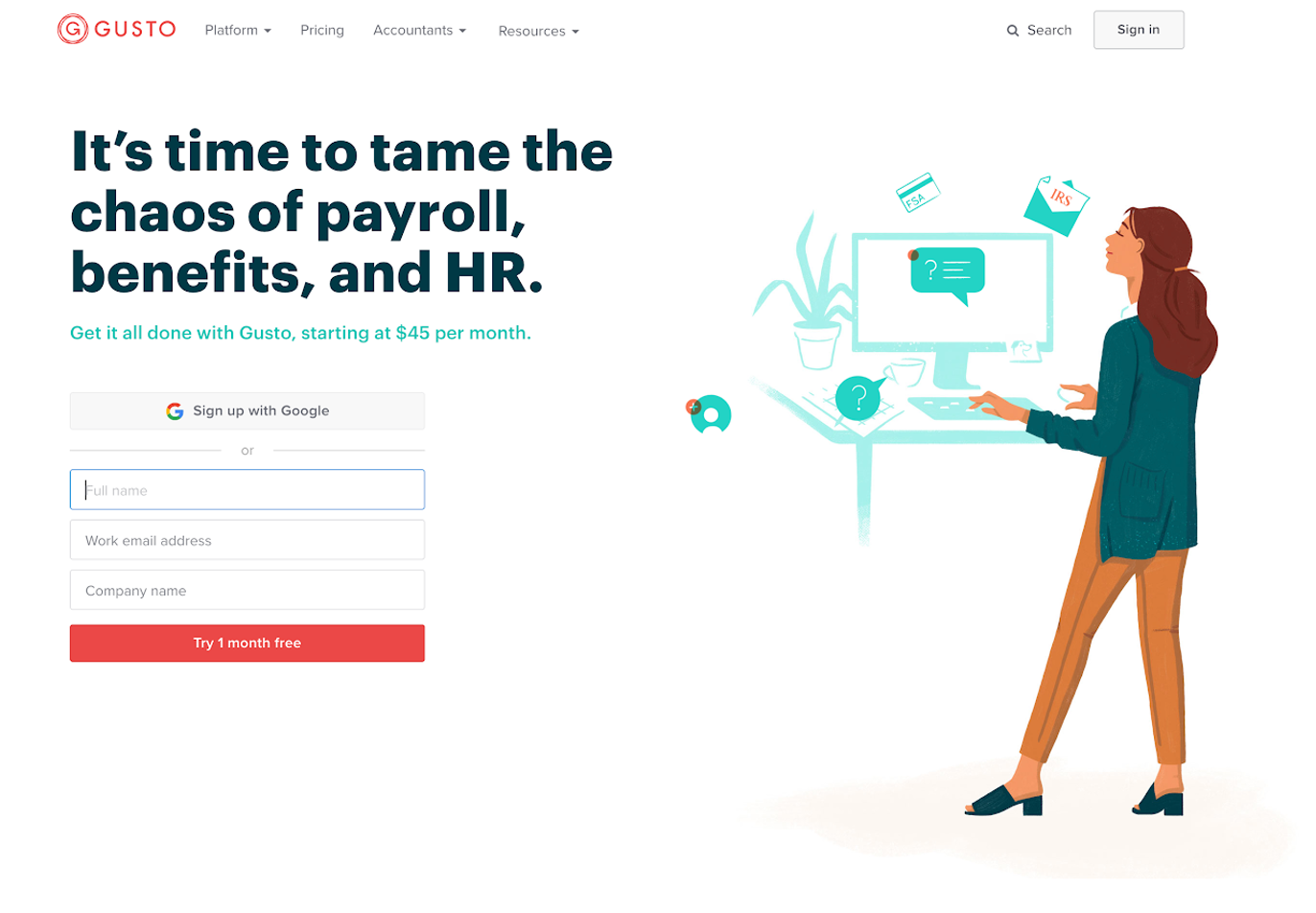
And for returning visitors who already have an account:
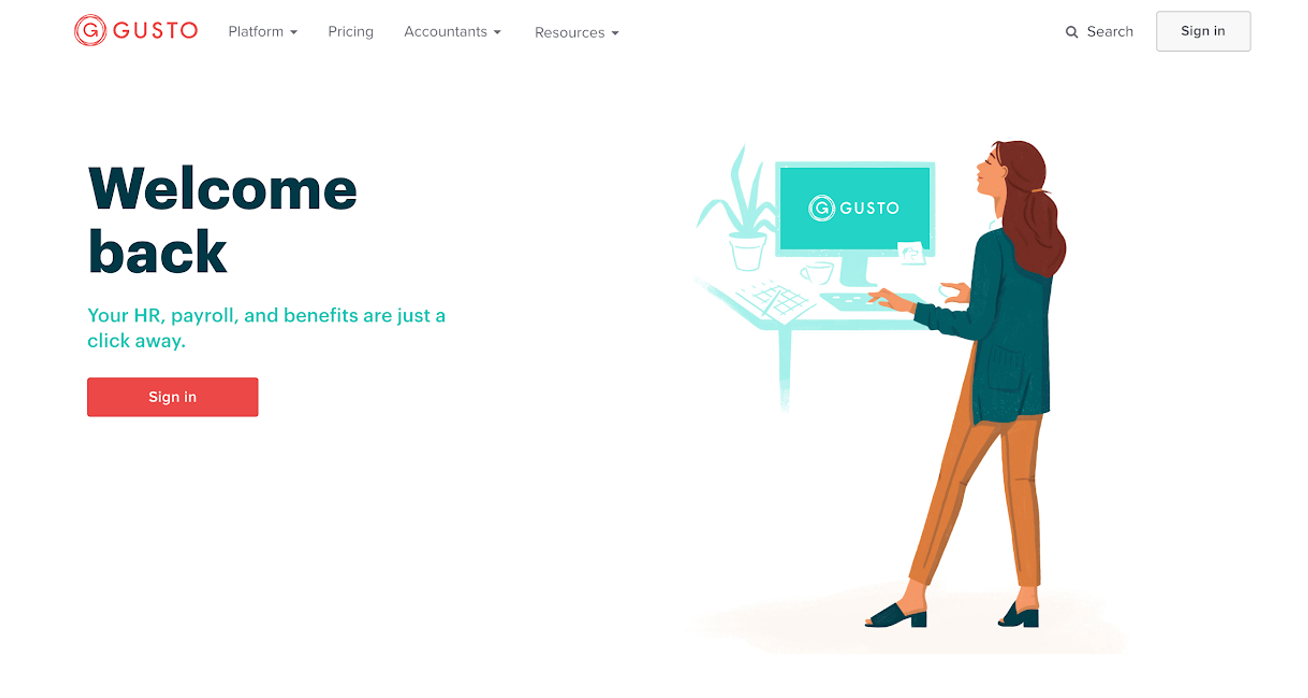
Using embedded content is the least intrusive form of web personalization because visitors don’t even notice that it’s happening. They simply browse the site and digest the personalized content as they go.
2. Overlays
Overlays cover up some of the background content of a website. The most common types of overlays are popups and sticky bars.
They’re usually more intrusive (since they appear unexpectedly and cover part of the page), but this makes them easier to notice. As a result, they have much better conversion rates than embedded forms of personalization.
There are lots of ways you can use sticky bars and popups for customer lifecycle management… in fact, you can accomplish most of the strategies above using overlays!
This includes offering discounts, asking for feedback, and recommending products based on past purchases to a well-defined target audience, ensuring that your messages are relevant and on target.
Check out some popup templates below that can help you to personalize your website:
Learn more about website personalization and how to get started with it by reading our guide here.
FAQ
What is the customer lifecycle in ecommerce?
The customer lifecycle in ecommerce refers to the stages that a customer typically goes through when interacting with an online store. These stages often include awareness, consideration, purchase, retention, and advocacy. Each stage represents a different level of engagement and presents opportunities for businesses to engage with customers and enhance their experience.
Why is customer lifecycle management important for ecommerce businesses?
Customer lifecycle management is vital for ecommerce businesses because it allows them to effectively nurture customer relationships, increase customer retention, and maximize customer lifetime value. By understanding where customers are in their journey and addressing their needs accordingly, businesses can create personalized experiences that lead to stronger customer loyalty and higher revenue.
Wrapping up
In today’s customer-centric economy, your users expect to be taken care of from the very start. This means personalizing the customer experience as much as possible so there are no barriers preventing customer loyalty.
Customer lifecycle management can deliver insights that are useful for every part of your operation, from the sales team to marketing to customer support.
When everyone on your team has the customer data they need to address visitors according to their customer lifecycle stage, you’ll lose fewer customers throughout your entire sales funnel.
If you’d like to start using personalized messages on your website, you can try OptiMonk for free. OptiMonk’s website personalization software can help you tailor your site to customers at each stage of the customer lifecycle!
